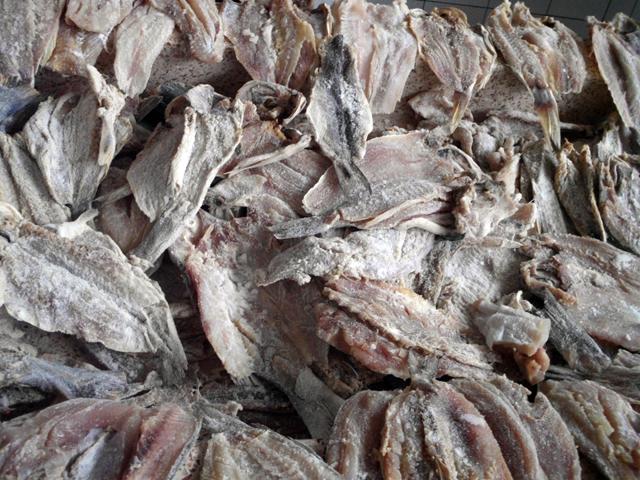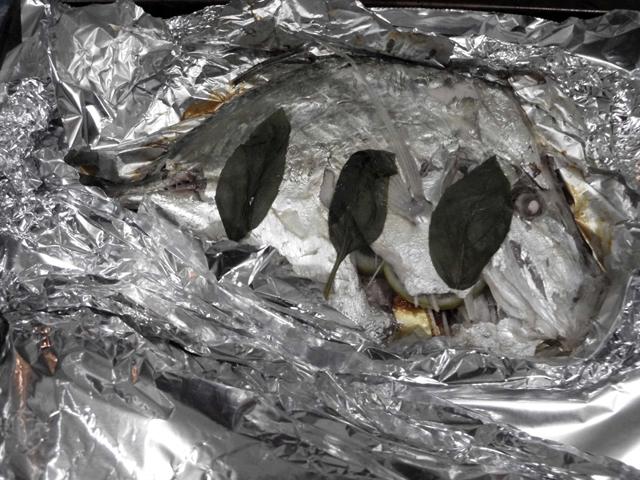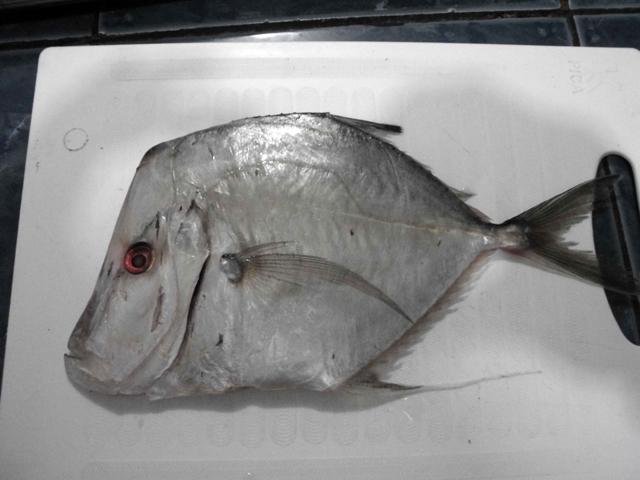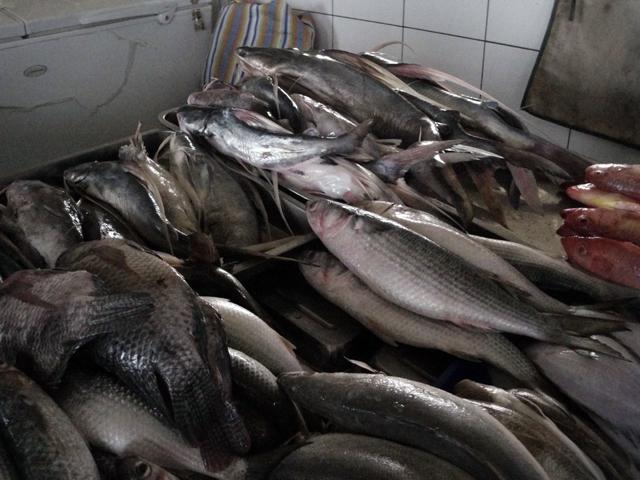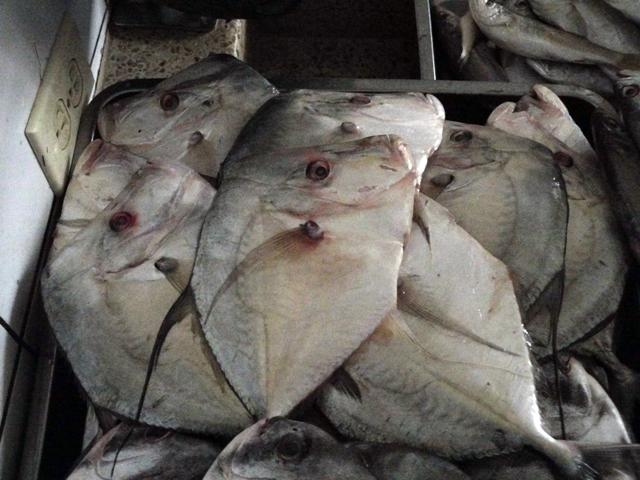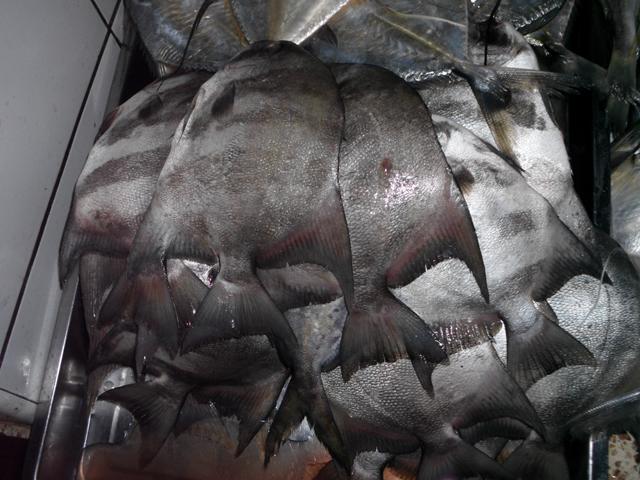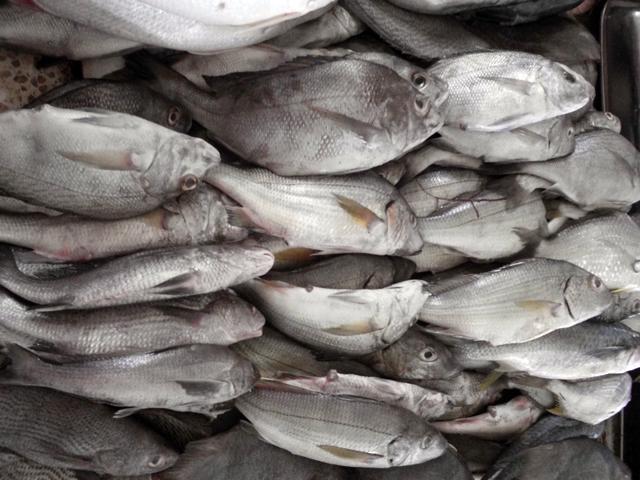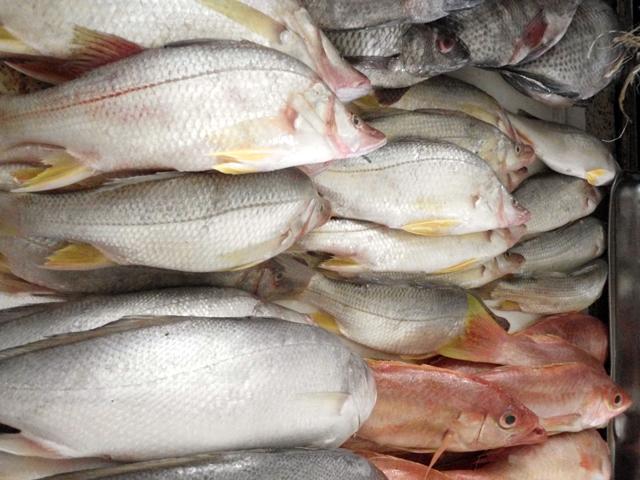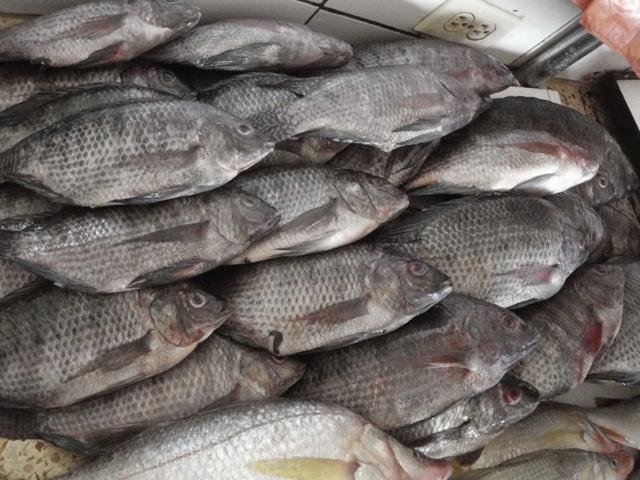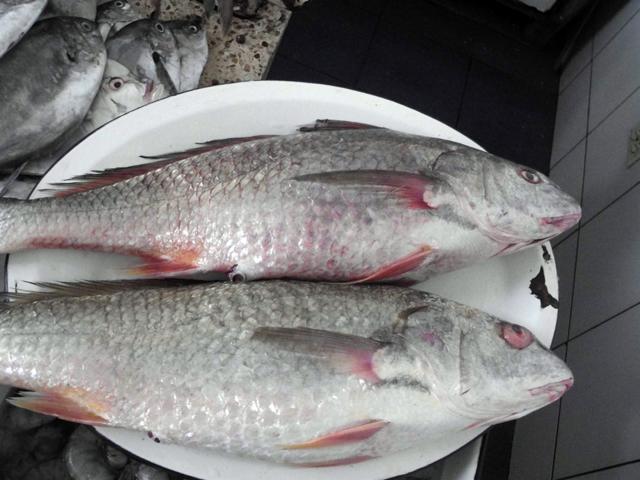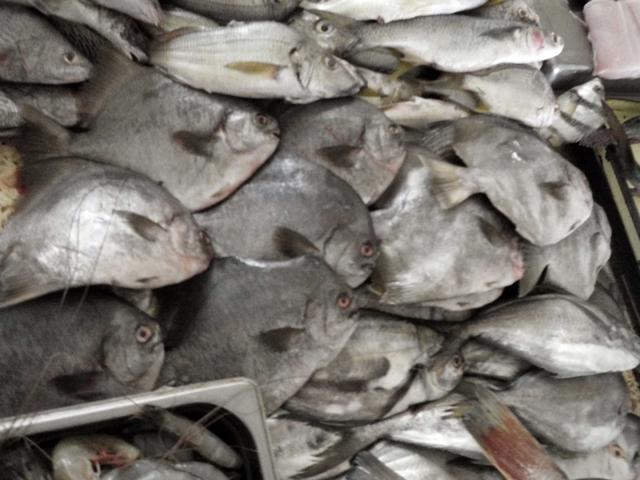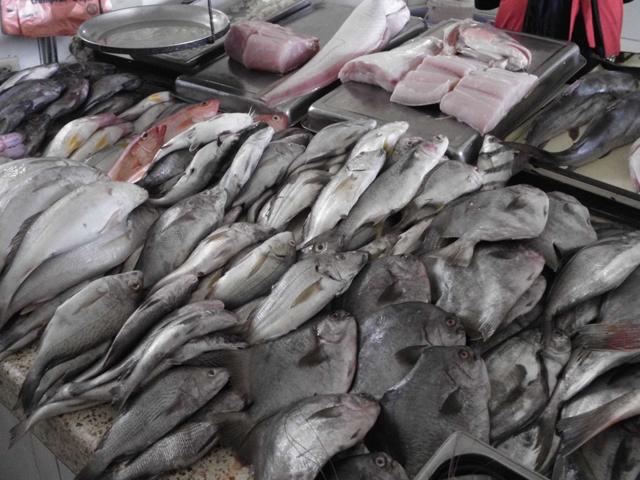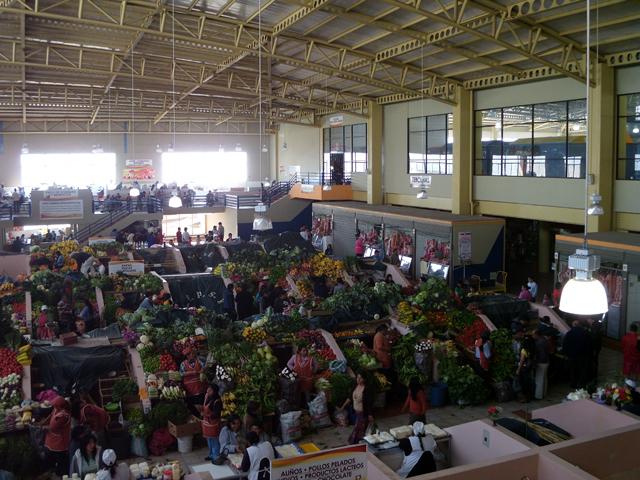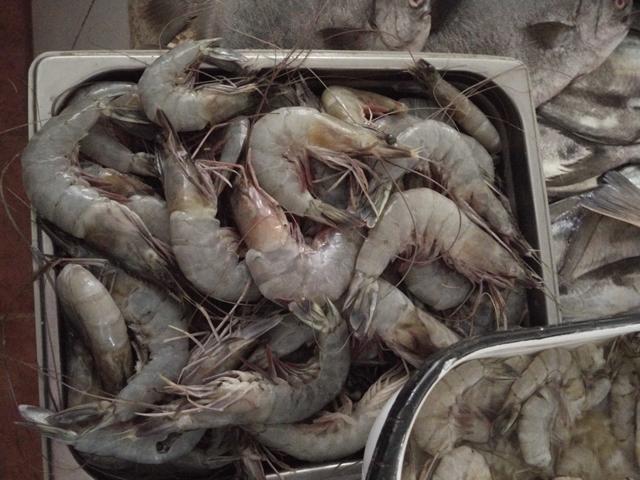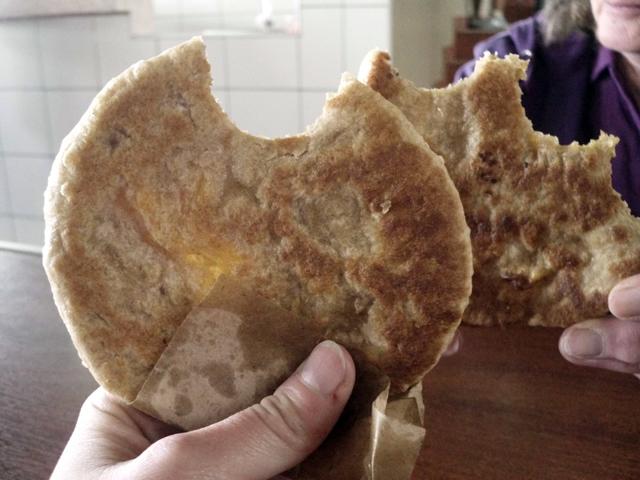-
Posts
2,383 -
Joined
-
Last visited
Content Type
Profiles
Forums
Store
Help Articles
Everything posted by Panaderia Canadiense
-

eG Foodblogs: Coming Attractions 2012 & 2013
Panaderia Canadiense replied to a topic in Food Traditions & Culture
Yes. Potatoes? Check. Beets? Check, and they're normally topped like that even when they're fresh because very few Latin American countries regard beet greens as more than pig fodder. Garlic and onions? Check and check. Carrots? So common in most Latin American countries that vendors often give 'em away with other purchases, and these almost always come with the greens which are a pot herb. The basket in the background appears to have some sort of small furry critters in it - if I really wanted to play devil's advocate, I'd say they look like cuyes, but I suspect they're rabbits.... That's not as common in North American farmer's markets. I'm sticking by Latin America. -

Must-have seasonal dishes/meals?
Panaderia Canadiense replied to a topic in Food Traditions & Culture
It's now mortiño season here in Ecuador (highland blueberries) - and that means I can make Colada Morada as well as mortiño jams and jellies. YAY! Darienne and LizD - I'm sure you mean "tortures" and not "tortieres"? Perhaps is just that my family made such awful ones - right up there with the Cornish Pasty (rhymes with "nasty" in our family....) -

eG Foodblogs: Coming Attractions 2012 & 2013
Panaderia Canadiense replied to a topic in Food Traditions & Culture
That's a market stall, in a free-for-all type farmer's market. I'm sticking to my guns on Latin America. Leafy greens may be in season wherever that was taken, but simply not be part of what that farmer's selling.... -

eG Foodblogs: Coming Attractions 2012 & 2013
Panaderia Canadiense replied to a topic in Food Traditions & Culture
Huiray: while religion is avoided here, there are major (off the top of my head) Catholic, Buddhist, and other religious festivals that have a huge food component traditionally. It does a disservice to the food if we don't also discuss the surrounding traditions. Discussion of the reasons things are eaten isn't proselytizing (something I hate, incidentally), it's providing context. Where in Latin America where it is cold enough that tree leaves fall? dcarch Chile, Argentina, southern Brazil, parts of Paraguay and Uruguay.... But there are also deciduous trees here at the equator, and all through the tropics. Cold is not a requisite for fallen leaves or "fall" colour in many places. -

eG Foodblogs: Coming Attractions 2012 & 2013
Panaderia Canadiense replied to a topic in Food Traditions & Culture
More than simply a cemetery - a Catholic one. That's the cross of Mary. So whoever we're blogging with is in a place where people would put such a thing up. I'm now thinking we've got a Latin America blogger for sure.... Nancy in Pátzcuaro? -

eG Foodblogs: Coming Attractions 2012 & 2013
Panaderia Canadiense replied to a topic in Food Traditions & Culture
Dia de los Muertos is a festival, but Todos Santos is a holiday over most of LatAm.... And in many Latin American countries, Muertos is celebrated under different names.... -

eG Foodblogs: Coming Attractions 2012 & 2013
Panaderia Canadiense replied to a topic in Food Traditions & Culture
Xlimmins in Brazil? Oh I do so hope.... -
I'll ask my supplier - do note that I'm in Ecuador....
-
My go-tos are applesauce and cheddar cheese quick bread, spiced applesauce cake, and applesauce/apple crisp. You can also put up apple pie filling made up of spiced applesauce with sliced apples poached in it....
-
I'm getting my first ones in to soak this week, using the recipe I posted in the Nova Scotia Traditions thread with a few tweaks in regards to the fruit. This year's special addition are the mini-mandarines I candied whole (thanks to Andiesenji for pointing me in the right direction for this - they're gorgeous!) and generous helpings of my own panela-candied ginger. I'll also be rocking candied papaya and watermelon peels, citron, candied lime, candied pineapple, sour candied cherries (my supplier gets them in from Poland!), macadamia nuts, and cashews. What booze is everybody using this year? I'm on overproof domestic rum because in the last year brandy has gone from $12 a bottle to $80 on the same brand (!) so it's now completely prohibitive to use it on the high number of cakes I'll be turning out. ETA Lindacakes - if they're 7" loaf pans, you can do what I do: 1 hour at 325, then two at 300. I have no idea of internal temps for doneness (I'm not a high-tech baker at all); I just poke 'em with a bamboo skewer after the second hour and every half hour thereafter, and when that comes out cleanly I pull them. If they're 7" rounds, I'd go 1 hour at 375 and 1 hour at 300, then test and add increments of 15 minutes still at 300 until you've got a clean skewer.
-
Sorry I didn't see this earlier! For each pound of chocolate, I use about 2 oz each of finely chopped roasted nibs and coffee beans (the beans I get are generally medium roast, so I toast them together with the nibs in my cast iron frypan). I generally put this into a 75% bittersweet; lately I'm inclining towards Kallari's wildcrafted gran-cru, but I've also had very favourable results using Bios 80 and adding a pinch of pink rock salt from Loja.....
-
You'd be surprised. I've had batches that I'd swear were 100% sterile and kept away from contamination that pinked out on me after 48 hours - the spores must have gotten into the culture between the scalding pot and the fermenting pot.
-

Indoor Herb Garden Suggestions?
Panaderia Canadiense replied to a topic in Food Traditions & Culture
I actually prefer the curly ones for pickled chilies - they're so much more decorative! -
Airborne, most likely.
-

Indoor Herb Garden Suggestions?
Panaderia Canadiense replied to a topic in Food Traditions & Culture
Mjx - curled chilies occur when one side of the fruit expands faster than the other; it's generally a genetic variance but can also have something to do with light and water. If the plant is in a window, for example, and receives strong directional light combined with infrequent watering during the fruit growth stage, it can cause curling (particularly in cultivars prone to curled fruit in the first place.) -
Definitely mould - pink is the first mould colour to appear in yogurt as it goes off....
-
Huiray: my tables are usually covered with baked goods, so I generally tend to break down fish into lumps I can manage easily while sitting on the sofa... I do steam when I have sufficient stovetop space. And more's the pity, it's nearly impossible to find good Chinese ingredients here; I could use Shaoshing wine if I wanted to pay $50 a bottle for it. Heidih - when that bacalao is completely ready, probably. It's an acquired taste; I love it, and mom hates it, so we'll see what happens.
-
Ecuadorian name: Carita English name: Peruvian Moonfish, Lookdown (Selene peruviana) Size: About 750 g across three fish, about 20 cm diameter Raw - in the catch of the day Raw - single fish Cooked Final plate Carita are somewhat perplexing fish - the name is a catchall for any fish with a large forehead, but these are the only ones that should properly have the name.... True Carita have a big bone in the forehead instead of meat (which was a surprise to me - I wonder what the fish uses it for) very fine skin, lots and lots of bones, and tender quite strongly fishy flesh. Very tasty, but definitely a fish for either frying or the BBQ, where the flavour will stand up better. Light baking in its own juices just made it fishier.... But what's a girl to do when the stovetop is full of other things, and it's already 7:30 at night and raining? And the catch of the day was pretty neat - there were more of last week's mystery fish, which has gained another Ecuadorian name: Chabelita. Not that it helps all that much with determining what it is I was eating.... They also apparently come in striped. And surprise of surprises - someone in the market is making bacalao!
-
I regularly handle truly enormous carrots (I'll take a pic tonight - I've got some in the pantry) and I've never had the need to core any of them - the centres aren't at all woody. I'm curious as to why MC is calling for cored carrots for preparations where they'll be pureed? Woodiness isn't an issue for carrot soup, nor for carotene butters, and carrot cores aren't flavour deficient or anything.... This said, I regularly cut very large carrots in half lengthwise using a 12" nakiri - I place the (peeled) carrot on my cutting board, make a light notch to set the knife, then one soft push and it's split. I have never ever cut myself sectioning carrots this way. For very fat carrots, I'll often set them on their fat end (so that they're sticking upwards) then set the knife on the thin end and push down. Again, with a properly sharp knife there's no issue.
-
It can; when I learned to make pita, I was taught to always throw the dough.
-
I tend to think that most recipes, especially salt-kitchen recipes, are guidelines..... For baking formuae, I'll follow them to the letter the first time round, then I'll tweak and adjust. For dinnery type things, though, I use the recipe as a starting point and go from there - if something seems silly or dangerous, I'll modify it.
-

A Week In Groceries Around the World
Panaderia Canadiense replied to a topic in Food Traditions & Culture
Interesting to see that they chose a highland family in Ecuador, too - the coast's weekly groceries are really different. They're also leaving out the fact that the family pictured likely raises their own chickens or cuyes - protein isn't represented in what they bought, but it's a big part of the Ecuadorian diet. -
In the foreground is mandarine orange topping and large mandarine slices; in the midground with melon slices is strawberry-melon topping, and in the deep background with the black grapes is maracuyá passionfruit topping. The cheese is quite neutral - it's a blend of gingered sugar with vanilla and three cheeses (I use mascarpone, cream, and ricotta). Mangoes are not quite yet in season - the first of the ambassadors have just arrived, and the good mangoes for cheesecake topping will be at least another two or three weeks. When I do have mango cheesecake, though, I tend to blend the pulp in with the cheese, then top with additional mango gelée.
-
And for those of you who were curious about the catch of the day as well as what the market looks like: The market. The first few shots, which show the food court, are taken from the fishmongers. The final one is taken from the food court. Oh, and they have tortillas de Guaranda here, which are some of my fave street food! Catch of the day at the stall where I bought the pomfret:



